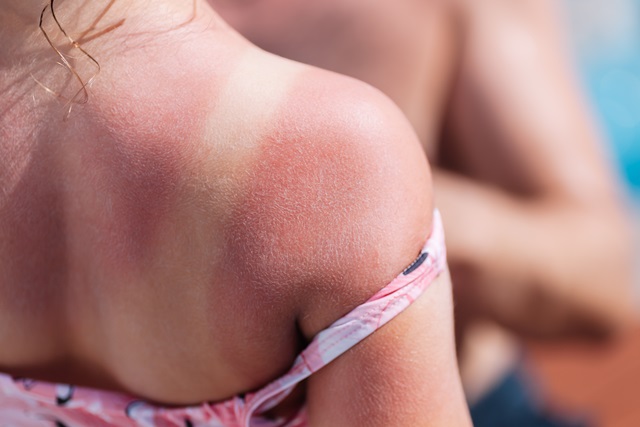After a never-ending winter with statewide snowfall records—we’re looking forward to summer fun and more time outside. As we head into the great outdoors, don’t forget the basic summer survival skills.
Heat stroke or heat exhaustion?
Spending too much time and being too active in the heat without adequate hydration can quickly lead to heat exhaustion and heat stroke, especially for children under four and adults over 65. Symptoms of heat exhaustion include muscle cramps, dizziness, fatigue, headache, nausea, pale skin, profuse sweating, and rapid heartbeat.
To help lower your body’s temperature, immediately get to a cool, shady place or an air-conditioned room to relax. Take a cool shower if possible. In addition, your body is dehydrated, so sip plenty of room-temperature water or Gatorade until your body cools. Call 911 if it persists or worsens.
Sunburn
Too much sun exposure not only means a painful sunburn, but as we know, it can lead to early aging of your skin and even skin cancer. Make it a habit to wear (and reapply) a high SPF broad-spectrum sunscreen. If you can, avoid exposure during peak times of intense sun between 10a–2p. Sitting in the shade and wearing large-brimmed hats and long sleeves can also help. While severe sunburn requires medical attention, you can treat mild cases of sunburn at home.
Eye Protection From Dangerous UV Rays
Even your eyes are vulnerable to sunburn; over time, it can lead to conditions such as premature cataracts and early macular degeneration. High-quality sunglasses offer more protection, but almost any pair is better than none. The best option is to choose sunglasses that state they block 100% of UV-A and UV-B rays and screen out 75-90% of visible light.
Lake Itch
It wouldn’t be summer in Minnesota without a few dips (okay, many dips!) in our beloved lakes. Occasionally some lakes get swimmer’s itch, also called lake itch. It’s a rash caused by an allergic reaction to parasites carried by waterfowl, semi-aquatic mammals, and snails. Some people may not have symptoms, while others, swimming at the same beach at the same time, may be covered with itchy bumps a few minutes up to two days later.
Sensitivity increases with each exposure, so take precautions before and after. Waterproof sunscreen can help protect the skin by serving as a barrier and as soon as you get out of the water, vigorously towel off so the parasites don’t choose your skin as their new home. While Benadryl or an anti-itch cream may reduce the itching, it will subside within a few days.
Tick Bites
If you find a wood tick on your skin or scalp, remove it as soon as possible. Use a fine-tip tweezer or tissue instead of your bare fingers. Grasp the tick as close as possible to the head, then gently but firmly apply pressure on the tick until you pull it out.
Wash the site of the tick bite with mild soap and water and watch for any signs of infection. Ticks may carry diseases that cause flu-like symptoms and sometimes a rash or a sore from 1 day to 3 weeks after the bite.
As you may have guessed, it’s best to avoid tick bites altogether. Apply an insect repellent and cover as much of your skin as possible when working in grassy or wooded areas. Wear a hat, gloves, light-colored long-sleeve shirts, and tuck your pant legs into your socks.
Learn more about First Aid for tick bites and prevention.
Safe and Fun Summer
Above all, be prepared and have fun this summer! Speaking of fun, here are some ideas as you launch into your summer activities with campfires, fireworks, and glow sticks.


